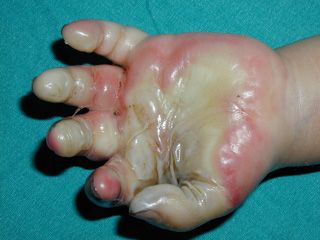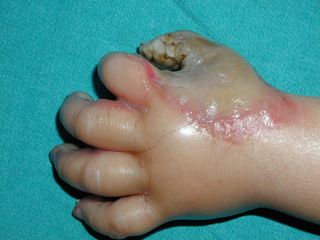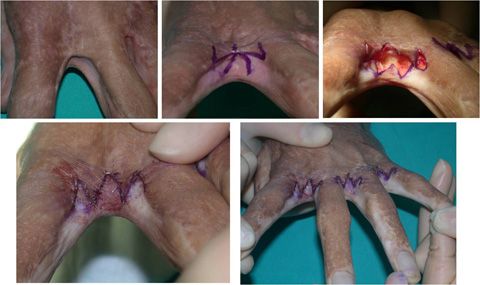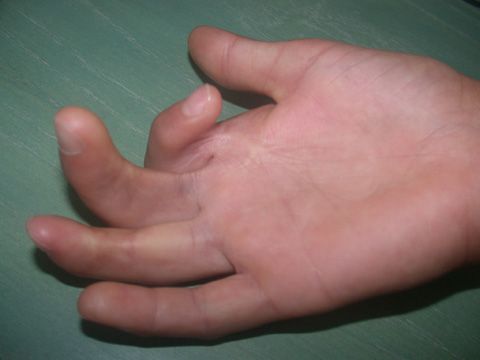HAND BURNS

Burn injury literally stands for tissue damage due to dying of skin cells when the skin meets a hot object. Burn severity is determined with the temperature and contact time. If a hot object is contacted for a while, complete layer injury of the skin may arise, even subcutaneous tissue may be injured due to the burn. (Figure 1)
Burns are not always with hot. Burns sometime arise with chemical substances as well.
Burn degrees are as;

- First Degree (superficial) ; only rash without bulla is present.
- Second Degree; partial skin injury is seen. Bullas are present.
- Third Degree; complete layer skin injury is present. The skin is white and rigid.
- Fourth Degree; is the burn type that deeper tissues, chorda, nerve, joint etc. tissues are affected.
After the burn, hand should be immediately removed from the hot material and should be cleaned under the cold water. Dry ice should never contact the skin directly. It should be applied on the skin after covering a material such as a cloth.The main purposes are to stop the pain and to try to prevent problems that may arise due to loss of protective layer of the skin. Germ protective ointment and creams that provide regional anesthesia are mixed and applied over the injured area. The pain may be extensive for the first days. When effect of ointments, especially anesthetic one, passes away, the mixture may be applied over and over. If the injury surface covers an important part of the body, the patient should be followed up in the hospital, because fluid losses and infection risk that may threaten the life may arise with the burn. If the burn is only in the hand, medical dressing follow-ups are made in general.
- First Degree burn recovers within a short time with ointment application following the cold application.
- In second degree burn, fluids in the bulla is cleaned additionally. Bracing may me performed for the further skin stretching. In cases where protective layer of the skin is destroyed, mixing germ protective ointments and pain decreasing ointments and application by dressing is suitable.
- Third degree burn is the burn of complete skin layers. Long term dressing follow-up is performed after removal of the dead tissues. Medical dressing period varies according to the burn degree and the recovery situation. Bracing is done to prevent tacking and expulsion that may occur during the recovery. After subcutaneous tissue becomes suitable, transplantation of skin to the places where skin loss is present is provided with surgery. Relaxing is performed with various surgical techniques for tacking and expulsions that may develop after the recovery (Figure 2.3).










